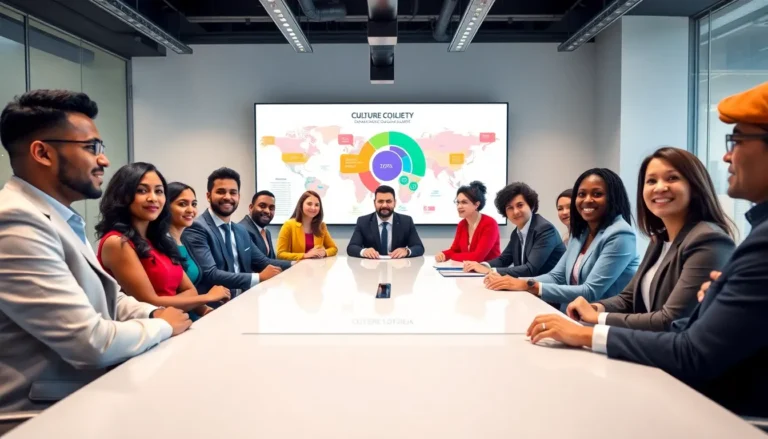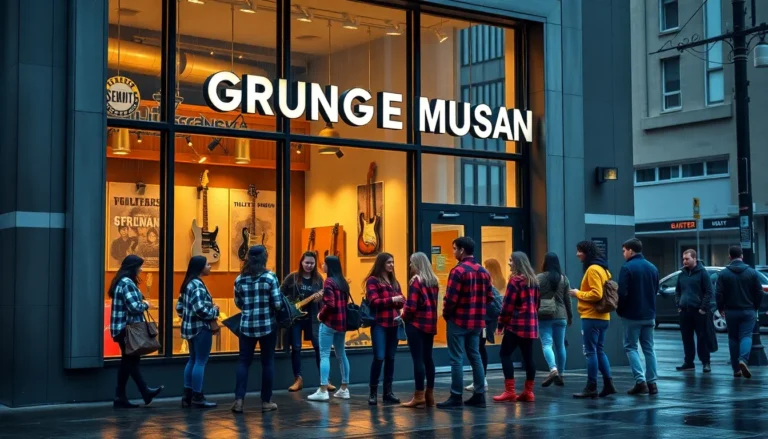In the ever-evolving world of the internet, memes reign supreme. They’re not just silly images with captions; they’re cultural phenomena that reflect society’s quirks, humor, and sometimes even its deepest anxieties. As trends come and go faster than a cat video can go viral, keeping up with the latest meme madness can feel like chasing a greased pig.
Table of Contents
ToggleOverview Of Top Meme Trends
Meme trends evolve constantly, reflecting societal changes, internet culture, and collective humor. Recent years showcase several prominent trends shaping online discourse.
Viral Challenges engage users by encouraging participation in playful tasks, often resulting in addictive content. Examples include the Ice Bucket Challenge and the Mannequin Challenge, which garnered massive engagement and visibility across social media platforms.
Reaction Memes utilize familiar images or snippets from pop culture, conveying emotions instantly. Popular formats like the “Surprised Pikachu” image or “Distracted Boyfriend” have seen widespread adaptation. Audiences quickly relate to these memes, enhancing their sharing potential.
Format Mashups combine different styles or themes, creating innovative humor. Memes that blend famous quotes with unexpected contexts thrive in this area. Representation across various formats fosters creativity and attracts diverse audiences.
Doomscrolling Memes leverage the pandemic’s impact on mental health. These memes creatively capture feelings of anxiety while offering light-hearted relief. While they address serious issues, they also connect individuals through humor.
TikTok Influences dominate modern meme culture through short, visual content. Trends often emerge from viral TikTok videos and quickly cascade across other platforms. The transition of sound clips into memes demonstrates the synergy between video and image formats.
NFT Memes introduce a unique intersection between digital art and meme culture. Artists create and sell meme-related artwork as NFTs, emphasizing the investment potential tied to viral content. This trend reflects a growing market combining art and technology.
As meme trends continue to develop, adaptability proves essential for creators and audiences alike. Understanding these trends equips users to navigate and engage effectively with the shifting landscape of internet culture.
Popular Meme Formats
Meme formats continually evolve, reflecting creativity and humor. Understanding these popular styles enhances appreciation for meme culture.
Image Memes
Image memes remain iconic within internet culture. Often, these memes combine visual elements with witty captions, creating instant humor. Examples like “Distracted Boyfriend” or “Woman Yelling at a Cat” demonstrate how relatable situations resonate well with audiences. Specific images tap into shared experiences, encouraging widespread sharing. Memes often call attention to various topics, from everyday life to social issues, amplifying their relevance. Various platforms, such as Instagram and Facebook, facilitate the rapid spread of these viral images.
Video Memes
Video memes capitalize on short clips to deliver punchy content. Platforms like TikTok or Instagram Reels allow users to create and share engaging videos quickly. Popular formats include lip-syncing or reacting to trending audio, often leading to widespread participation. Remixing well-known clips fosters a sense of community among users. Trends often evolve, with challenges like the “Savage Love” dance gaining traction and inspiring others to replicate or add personal flair. Utilizing humor and relatability, video memes play a significant role in shaping contemporary internet culture.
Cultural Impact Of Memes
Memes shape modern cultural landscapes, operating as powerful tools for communication and expression. Their influence permeates various platforms, creating connections across diverse audiences.
Social Media Influence
Social media platforms serve as the primary breeding grounds for meme culture. User-generated content flourishes on sites like Twitter, Instagram, and TikTok, where memes spread rapidly. A single post can ignite widespread engagement, allowing humor to transcend geographical boundaries. Memes act as a language, reflecting current events and cultural shifts. Many users rely on them for commentary, often using humor to convey complex emotions. Marketers recognize this power, leveraging meme formats to increase visibility and enhance relatability. Memes encapsulating shared experiences foster community, encouraging interaction among users.
Meme Marketing Strategies
Brands incorporate memes as a strategic element within their marketing campaigns. Successful meme marketing relies on authenticity, humor, and timeliness. Crafting relatable content resonates with target audiences while enhancing brand image. Campaigns centered around popular memes can drive traffic to websites, amplify social media engagement, and increase overall reach. Memes capture attention quickly, often resulting in higher share rates compared to traditional advertising. Marketers also adapt existing meme formats to align with specific brand messages, ensuring relevance in the cultural conversation. Effective use of memes not only fosters engagement but also cultivates a sense of loyalty among consumers.
Evolution Of Meme Trends
Meme trends reflect the shifting dynamics of online culture and communication. Their evolution showcases creativity and adaptability in the face of technological advancements.
Historical Context
Memes began as simple images or phrases, often shared via email or early social media platforms. The “Dancing Baby” from 1996 marked a pivotal moment in viral content, demonstrating the internet’s capacity for humor. In the 2000s, memes like “Rickrolling” and “Bad Luck Brian” surged in popularity, using relatable scenarios to connect with audiences. These early examples laid the groundwork for the sophisticated formats seen today, blending humor with cultural references.
Current Trends
Current meme trends thrive on platforms like TikTok, where short videos capture the essence of modern humor. Viral challenges, such as the “Silhouette Challenge,” engage users through participation and creativity. Reaction memes continue to dominate, allowing users to express emotions instantly with recognizable images. Doomscrolling memes provide relief from daily stress, combining humor with real-life issues. As memes evolve, they remain crucial in shaping online interactions and communication, significantly influencing user engagement and marketing strategies.
Memes have become an integral part of internet culture that transcends mere entertainment. They reflect societal sentiments and adapt to ever-changing trends. As new formats and themes emerge, staying engaged with the latest meme developments is crucial for both creators and audiences.
The influence of platforms like TikTok and the rise of NFT memes illustrate the innovative spirit of meme culture. This dynamic landscape not only fosters creativity but also serves as a powerful communication tool. As memes continue to evolve, they’ll undoubtedly remain a significant force in shaping online interactions and cultural conversations.








